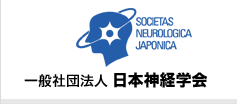- HOME
- Vol.53 No.5
- CLINICA NEUROL, 53: 362−366, 2013
- Vol.53 No.5 contents
Case Report
Successful treatment of HIV-associated chronic inflammatory demyelinating polyneuropathy by early initiation of highly active anti-retroviral therapy
Kodai Kume, M.D.1), Kazuyo Ikeda, M.D.2), Masaki Kamada, M.D.2), Tetsuo Touge, M.D.3), Kazushi Deguchi, M.D.1) and Tsutomu Masaki, M.D.1)
1)Department of Gastroenterology and Neurology, Kagawa University Faculty of Medicine
2)Department of Neurological Intractable Disease Research, Kagawa University Faculty of Medicine
3)Department of Health Sciences, Kagawa University Faculty of Medicine
A 47-year-old man with HIV infection presented with lower leg dominant dysesthesia, muscle weakness and sensory ataxia of 3 month's duration. Nerve conduction studies (NCS) showed demyelination change in the median and tibial nerves and sensory nerve action potential (SNAP) in the sural nerve was not evoked. Somatosensory evoked potential (SEP) showed the delayed N9 latency. Diagnose of HIV-associated chronic inflammatory demyelinating polyneuropathy (CIDP) was made. Although the CD4 lymphocyte counts were relatively preserved (466/µl), highly active anti-retroviral therapy (HAART) was started according to a new guideline for the use of antiretroviral agents in HIV-1-infected adults and adolescents recommending early initiation of treatment. After six months, HIV1-RNA was not detected and the CD4 lymphocyte counts showed a recovering trend (585/µl). His symptoms had disappeared, except for dysesthesia in the tip of a toe. Repeated NCS demonstrated full recovery from the demyelination and appearance of SNAP in the sural nerve. The improvement of his symptoms and NCS findings has been maintained for two years. Although effectiveness of immunotherapies such as oral prednisone, high-dose immunoglobulins and plasmapheresis have been reported in HIVassociated CIDP, early initiation of HAART may be also important for favorable prognosis in HIV-associated CIDP.
Full Text of this Article in Japanese PDF (1221K)
(CLINICA NEUROL, 53: 362−366, 2013)
key words: human immunodeficiency virus, highly active anti-retroviral therapy, chronic inflammatory demyelinating polyneuropathy
(Received: 13-Sep-12)


